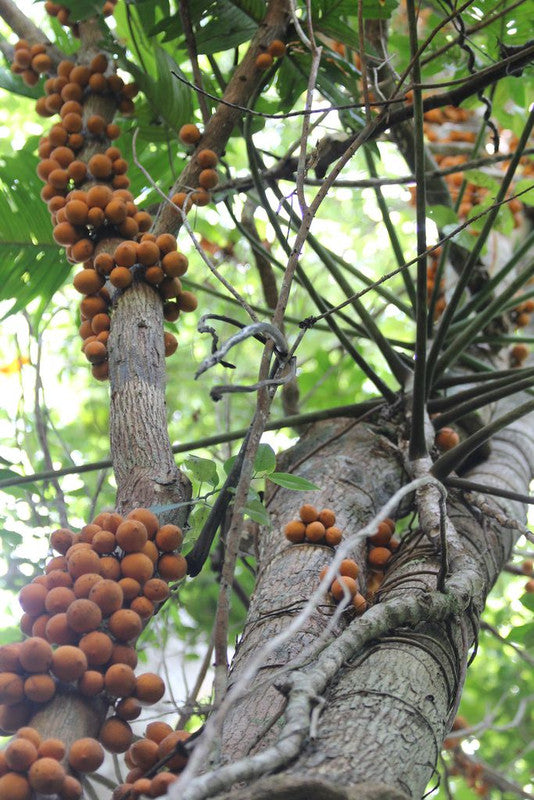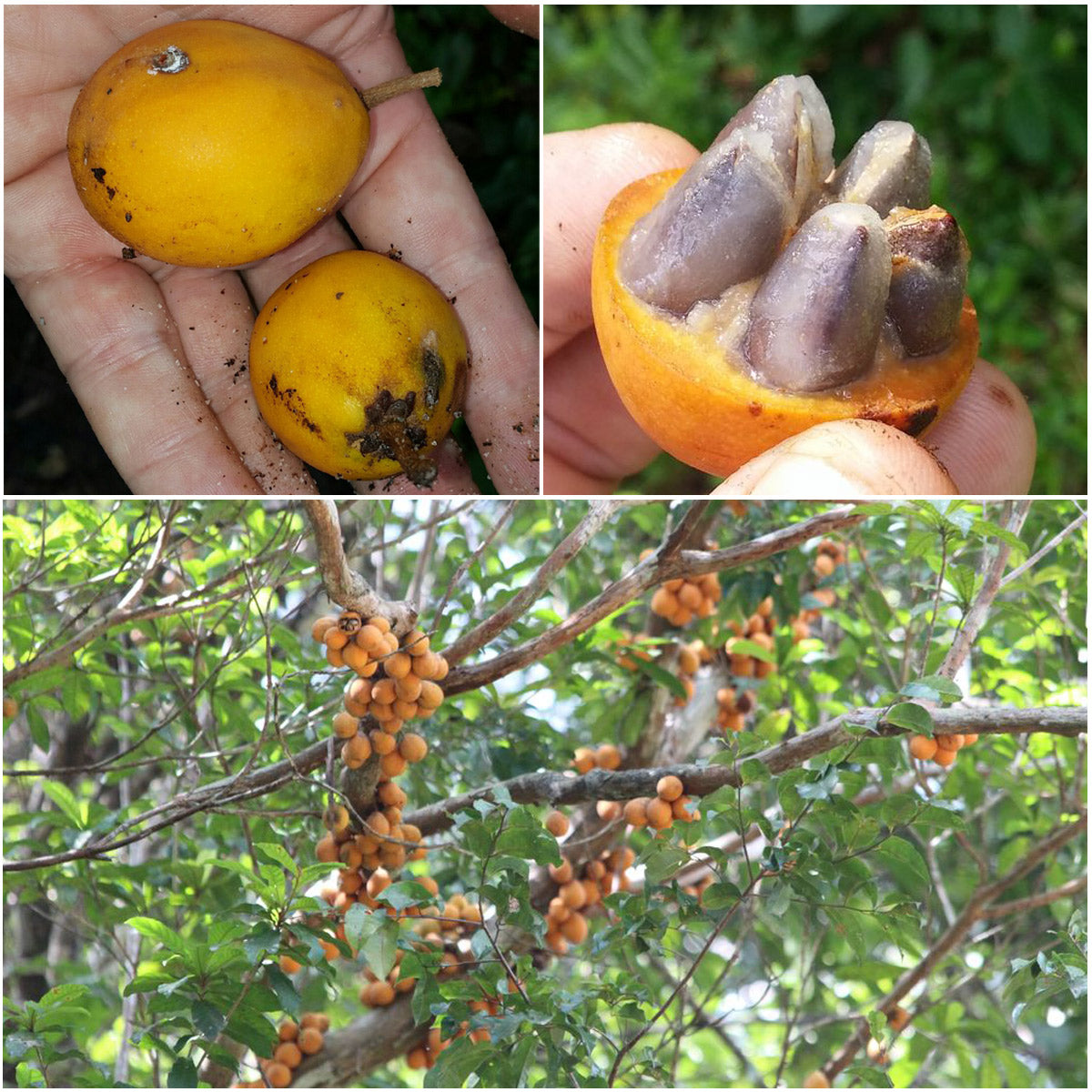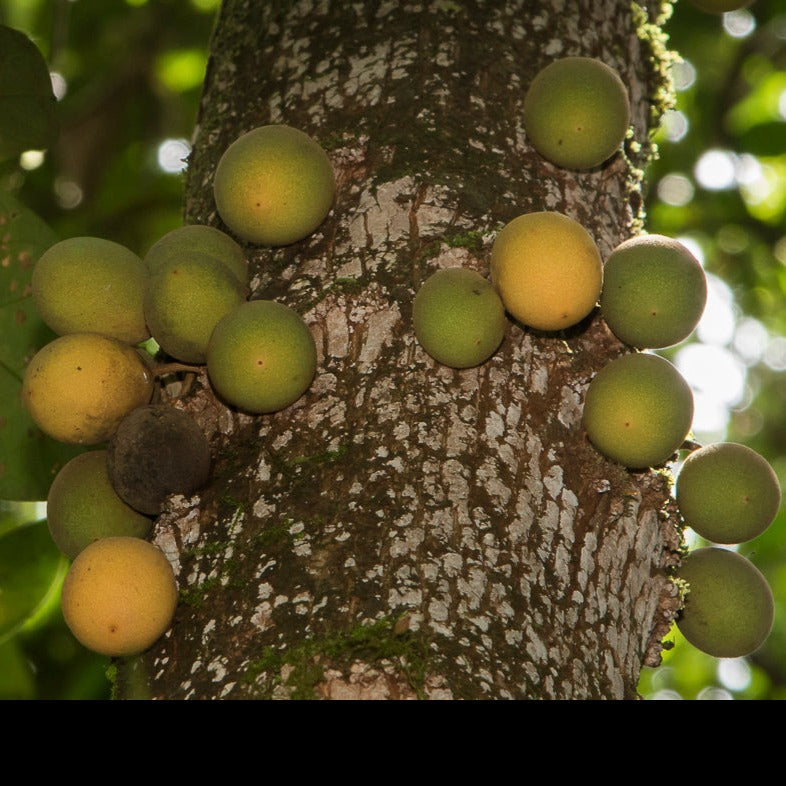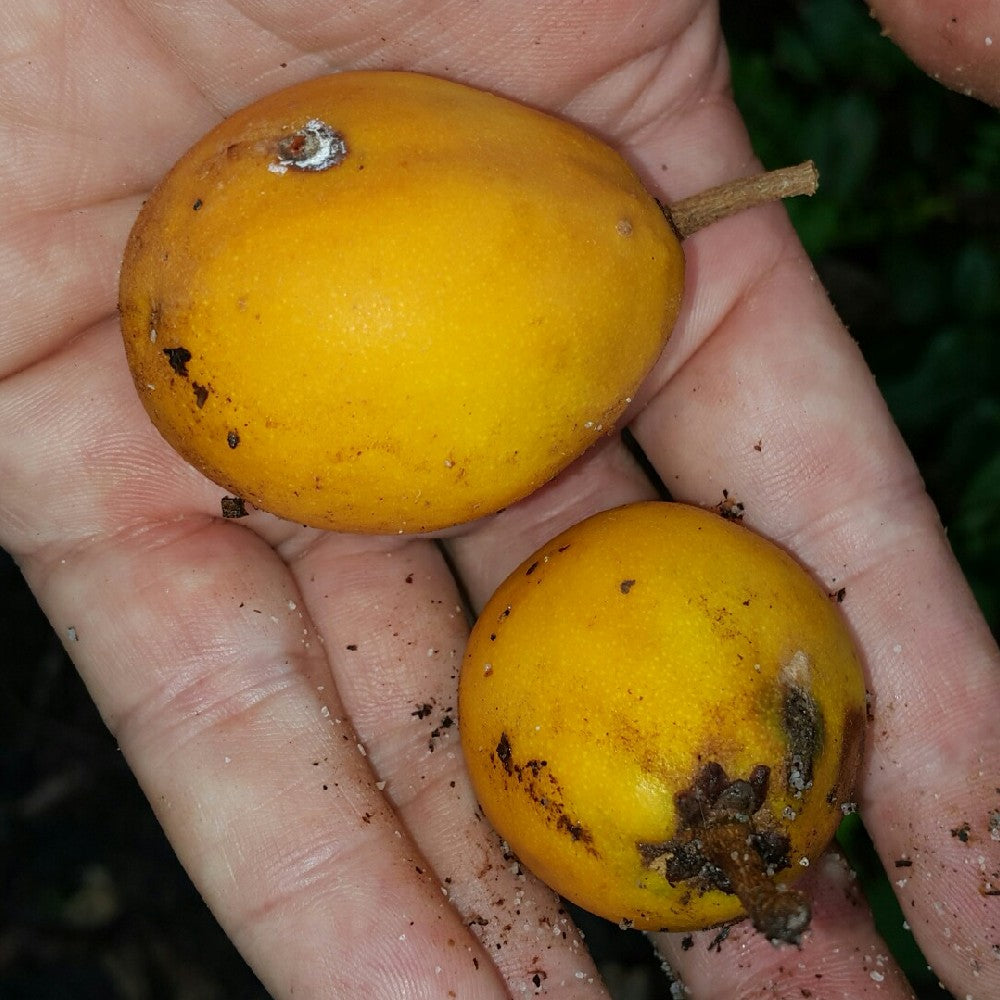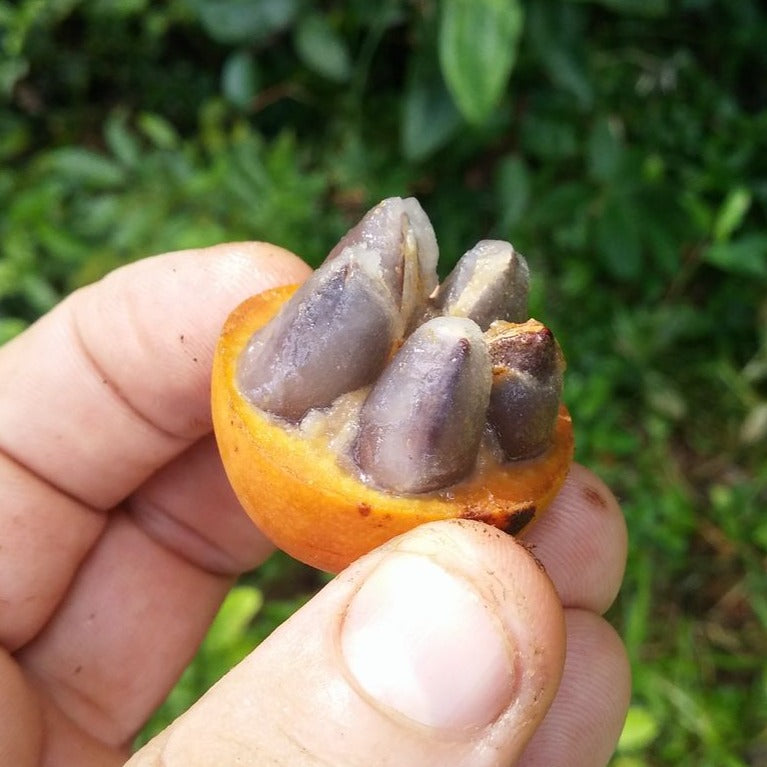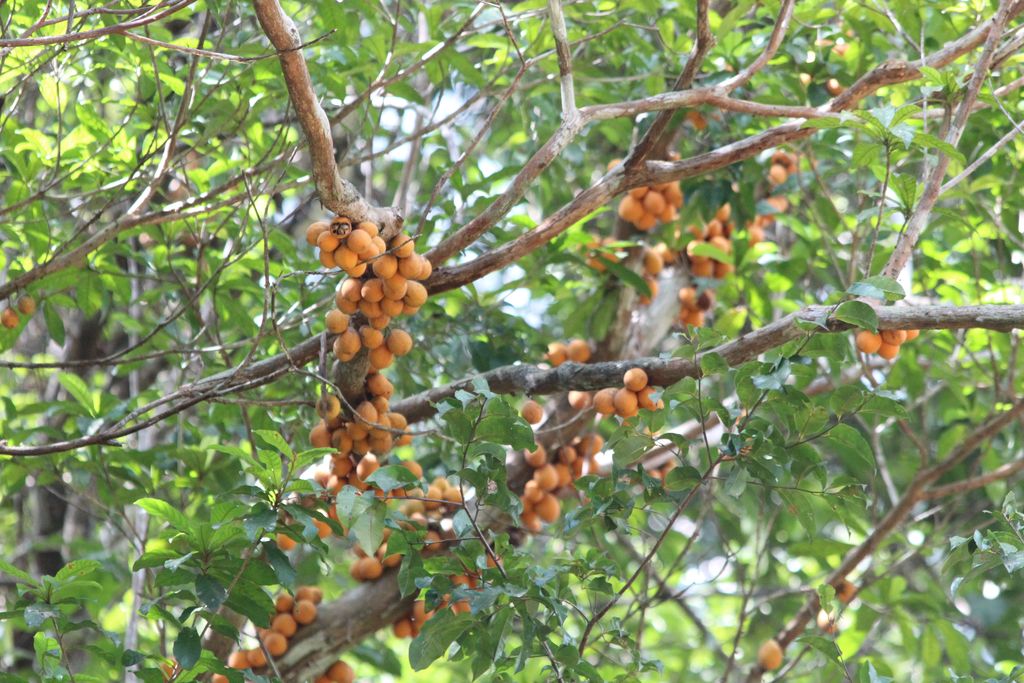Botanical Name: Chrysophyllum cuneifolium
Common Name: Sapoticaba
General Information
The Sapoticaba Fruit Plant, scientifically known as Chrysophyllum cuneifolium, is a rare and captivating evergreen tree from the Sapotaceae family. Native to subtropical regions of South America and the Caribbean, this tree is a true spectacle in any exotic fruit garden. Its unique cauliflorous and ramiflorous nature allows it to fruit from the ground level all the way up its branches, offering a striking visual display. This tree starts flowering when it is just a few meters tall, eventually becoming fully adorned with vibrant yellow to orange fruits during its blooming season.
Fruit Description
The Sapoticaba's fruits, reaching up to 5 cm in diameter, are a delight to the senses. Their translucent, sweet pulp encases 1 to 5 seeds, offering a delicious taste that is both refreshing and satisfying. This fruit is not only a treat but also a valuable source of essential micronutrients and minerals, including calcium, phosphorus, and potassium. These nutrients play a crucial role in maintaining electrolyte balance, supporting brain function, and promoting the development of strong bones and teeth.
Cultivation Information
-
Bloom Time/Fruiting: 2 to 3 years
-
Maintenance Required: Moderate
-
Preferred Conditions: This perennial tree thrives in tropical and subtropical forests, enjoying full sun and well-drained soil. While it is drought-tolerant and can endure some shade, it flourishes best in conditions that mimic its native habitat.
Health Benefits
The Sapoticaba fruit is a powerhouse of nutrients and health benefits:
-
Micronutrient Rich: Loaded with vitamins and minerals, this fruit supports overall health, contributing to stronger bones, better cognitive function, and a well-maintained immune system.
-
Antioxidant Powerhouse: The fruit's rich antioxidant content helps protect the body from oxidative stress, reducing the risk of chronic illnesses.
-
Supports Digestion: High in dietary fiber, it aids digestion and prevents common issues like constipation and bloating.
-
Natural Remedy: Traditionally, various parts of the Chrysophyllum cuneifolium tree have been used to treat ailments such as coughs, colds, fever, and gastrointestinal disorders.
Traditional and Medicinal Uses
In traditional medicine, the leaves, bark, and seeds of Chrysophyllum cuneifolium are prized for their numerous benefits:
-
Wound Healing: The tree's extracts are known to accelerate wound healing and prevent infections.
-
Skin Care: Its leaves are used in soothing ointments for dry skin, while seed extracts help treat dermatological issues.
-
Rheumatism and Malaria Treatment: The leaves and bark are infused in herbal remedies for rheumatism and malaria, showcasing the plant's versatility.
Cultural Significance and Ecological Role
The Sapoticaba is not only valuable for its fruits and medicinal properties but also plays a significant role in its ecosystem. As a small evergreen tree, it contributes to the biodiversity of tropical and subtropical forests, providing habitat and food for wildlife.
Culinary Uses
The fruit is commonly enjoyed fresh, with its sweet, succulent pulp offering a delightful experience. It can also be used in desserts, beverages, and other culinary creations, adding a tropical twist to traditional recipes.
A Noble Initiative by Veliyath Gardens
At Veliyath Gardens, we are dedicated to enriching our plant nursery with rare and exotic species like the Sapoticaba Fruit Plant. By providing detailed information on these unique plants, we aim to inspire fruit lovers to explore and add these treasures to their own plant gardens. Our commitment to sharing knowledge ensures that our website serves as a valuable resource for those passionate about cultivating rare and exotic fruits.
